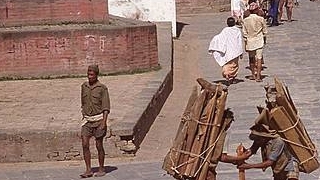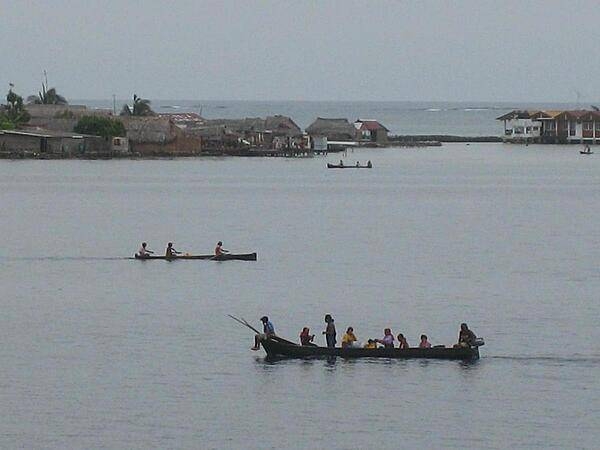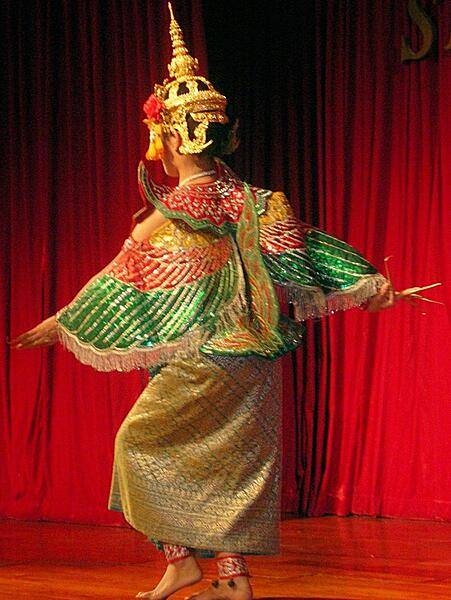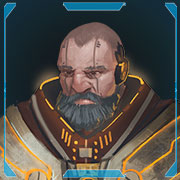Ireri Perre: Spawn of the Coast
Many historians wonder how the Ireri Perre were able to endure three volcanic eruptions in the heart of their lands. The island of Irewa was far too poor to support such a versatile civilization. The one with a keen eye on culture, however, can explain their resilience quite easily. While the decadent riverside nations of Yukur would stumble over themselves to make a problem worse, the people of Irewa knew how to come together during times of crisis; it was fused into their very philosophy.
Their resolute mindset in times of scarcity became even more useful in times of plenty. Centuries after the collapse of Irewa, the descendants of the Ireri Perre would rise to form the two strongest, most influential nations Wouraiya had ever seen, thanks greatly to the lessons the mother nation taught.
TIMELINE: The legacy of the Ireri Perre endures to this day.
Their resolute mindset in times of scarcity became even more useful in times of plenty. Centuries after the collapse of Irewa, the descendants of the Ireri Perre would rise to form the two strongest, most influential nations Wouraiya had ever seen, thanks greatly to the lessons the mother nation taught.
TIMELINE: The legacy of the Ireri Perre endures to this day.
Culture
Major language groups and dialects
The Ireri Perre spoke Irewom, which is original as far as anyone can tell. Perhaps it was invented when humans first learned to speak!
Irewom has a few key elements. Unlike its descendant tongues, Irewom was designed with a very expressive face in mind. On the waters and from a distance, Perre did not expect the listener to understand from sound alone. No offense was meant, though none was taken. It was simply a pragmatic way to convey meaning. This caused miscommunication, however, when dealing with the fixed-jaw Werai.
The descendants of Irewom are Wokaiya and T'gagu. They fused the language structure of Irewom with the emotionless expression of Werai to get the best of both.
Irewom has a few key elements. Unlike its descendant tongues, Irewom was designed with a very expressive face in mind. On the waters and from a distance, Perre did not expect the listener to understand from sound alone. No offense was meant, though none was taken. It was simply a pragmatic way to convey meaning. This caused miscommunication, however, when dealing with the fixed-jaw Werai.
The descendants of Irewom are Wokaiya and T'gagu. They fused the language structure of Irewom with the emotionless expression of Werai to get the best of both.
Shared customary codes and values
The Perre had a common saying: "Obaor me, iar mair," translating to "Receive for one, make for two." The volcanic soil of Irewa could only produce so much for so many. The island dwellers had to come together to provide for each other by necessity. The Perre learned to ration well, taking only what was needed and being grateful for it. What remained was left for those whose crops failed or who otherwise could not provide for themselves. In times of plenty for everyone, the second portion would be saved for a feast the next day.
This was not to say, though, that this system was perfect or even benevolent. Those who need aid in one cycle would give generously in times of plenty if they ever wanted aid again. Those who clearly could work and chose not to were ostracized from the community, rarely if ever given provisions. The Irewan government often abused the system, seizing the second portion for themselves. The emergency food would contribute to the waistlines of the public servants, or would rot away in storehouses from mismanagement. Either way, those who prepared in advance would have nothing when a true emergency came. The first volcanic eruption emphasized the need for governmental reform, and the corruption never returned.
This selflessness manifested towards its descendants in different ways. The Keyrit-Welokyi inherited a hard-nosed pragmatism. Though their lands were much more fertile, they were able to use their resources more efficiently to punch well above their weight. On the other hand, the T'kakou would develop this ideal into a survival-of-the-fittest mindset. While this often comes from an individualist perspective, the self-sacrifice of the weak made it possible for the rest to live in the harsh lands of Yatkaugo. The weak were honored in their death as the strong lived on in their memory.
This was not to say, though, that this system was perfect or even benevolent. Those who need aid in one cycle would give generously in times of plenty if they ever wanted aid again. Those who clearly could work and chose not to were ostracized from the community, rarely if ever given provisions. The Irewan government often abused the system, seizing the second portion for themselves. The emergency food would contribute to the waistlines of the public servants, or would rot away in storehouses from mismanagement. Either way, those who prepared in advance would have nothing when a true emergency came. The first volcanic eruption emphasized the need for governmental reform, and the corruption never returned.
This selflessness manifested towards its descendants in different ways. The Keyrit-Welokyi inherited a hard-nosed pragmatism. Though their lands were much more fertile, they were able to use their resources more efficiently to punch well above their weight. On the other hand, the T'kakou would develop this ideal into a survival-of-the-fittest mindset. While this often comes from an individualist perspective, the self-sacrifice of the weak made it possible for the rest to live in the harsh lands of Yatkaugo. The weak were honored in their death as the strong lived on in their memory.
Common Dress code
A modest short-sleeve robe that covered the torso, went down to the knees, and was fastened by a belt was all that was expected of most, regardless of gender. However, those with money to spend or a job in performance arts might acquire material in what they considered to be "autumnal" colors: red-orange, orange-yellow, purple, and green. They would don an additional robe to go over their arms, and they would have an ornament to cool their head from the gaze of the sun. Scandal didn't come from how much or how little one wore, but how bright and flashy one's clothes were.
Remove these ads. Join the Worldbuilders Guild
















This looks like a really interesting culture, I love how their reserved attitude towards consumerism seems to have influenced their attitudes towards things like clothing. Cool article!